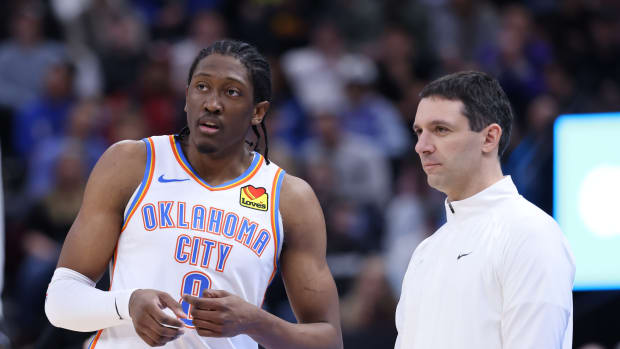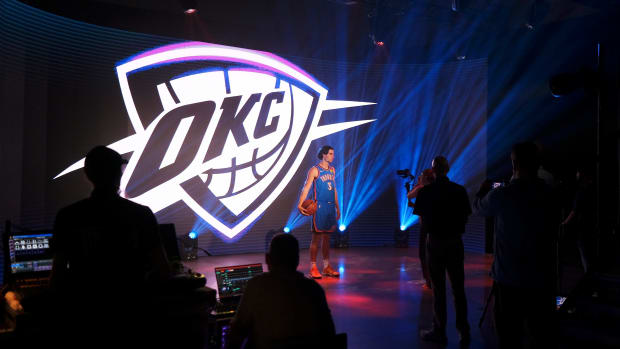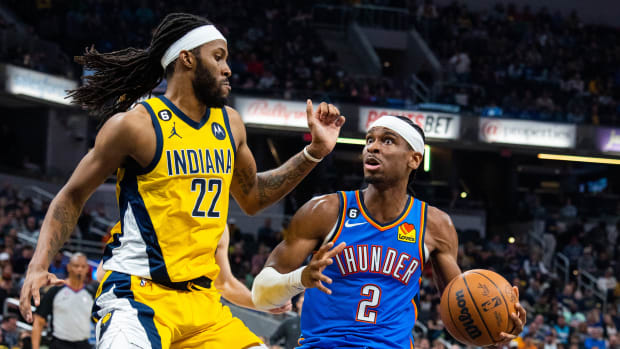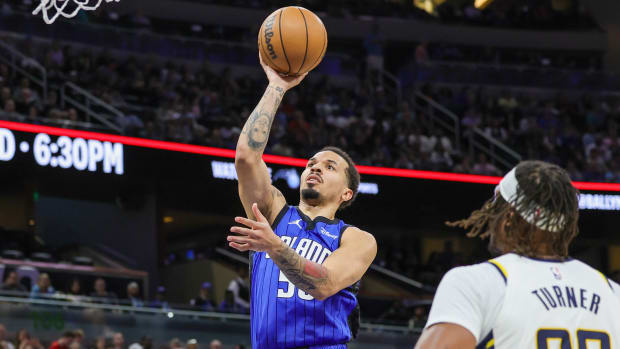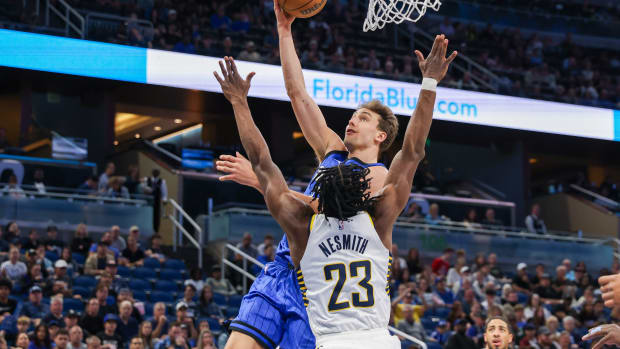Afseth Analysis: Pacers Facing Major Limitations on Defense Without Turner
INDIANAPOLIS, Ind. - Under head coach Nate Bjorkgren, the Indiana Pacers have adopted an aggressive defensive scheme. Sending extra pressure to the ball is a high-risk, high-reward strategy that requires the appropriate personnel to execute.
The anchor of this strategy for the Pacers is Myles Turner. His elite ability to rotate from the weak-side and make his shot-blocking presence felt enables the rest of the unit to be more aggressive up top. Ultimately, Turner helps to clean up mistakes and be a last-line of defense between the rim when gambles don't pay off.
Over the Pacers' last two games, Turner has been sidelined but the team has continued to use the same 'attacking' defensive strategy. The results were far from ideal as Indiana gave up 129 points to the Los Angeles Clippers and 124 points to the Dallas Mavericks.
A vulnerability in the Pacers' defense that stuck out was the use of Domantas Sabonis in blitzes atop the perimeter and switching against ball screens.
"I had Domas out there on the perimeter a lot in blitzes and in his coverage, I was even switching with him a bit out there," Pacers coach Nate Bjorkgren said. "So it left us a little bit smaller on the backside of our defense when Domas is out there being aggressive."
"I love the aggressiveness he played with, and our team played with. They made the shots when they had to make them."
Since Sabonis lacks the intangibles to serve as a rim protector in the paint against starting level talent, it's reasonable to get creative by using him to apply defensive ball pressure. However, doing so without having a versatile defender serving as the low-man is highly problematic at times.
Given that TJ Warren is sidelined, Doug McDermott has often filled the role of being the low man for the Pacers. The most problematic stretch with this strategy occurred against the Mavericks in the opening period -- resulting in glaring breakdowns.
The Mavericks often utilize complete floor spacing around high ball screens when Porzingis is the lone big man on the court. With efficient shooters ready to catch-and-shoot from both corners, there isn't a favorable outcome if Doncic is able to get the ball out of his hands. In a few instances early in this game, Porzingis rolled to the rim and was left completely untouched.
There simply isn't enough foot speed or lateral quickness from Sabonis to be able to hard-hedge the ball screen and handle tracking Doncic out in space. When factoring in how masterful Doncic is with live dribble passing and looking off defenders to create holes to exploit, the Pacers' limitations only get further exacerbated.
The result the Pacers have achieved during this sample size when McDermott and Sabonis have shared the floor is telling. Indiana has produced just a 133.1 defensive rating in 65 minutes and that has contributed to a terrible -30.9 net rating.
Sabonis attributed those defensive breakdowns to the low man not staying in the paint long enough. While he was trapping the ball, McDermott was supposed to pre-rotate to the paint and deter the pass being made to Porzingis.
"It's tough. We were trapping, we just didn't do the coverage correctly until the end," Sabonis said. "The low man had to stay there longer and we just didn't execute it how we expected... That's where they got that lead."
There's a real counter-argument to be made to what Sabonis expressed about those plays. For starters, Porzingis is 7-foot-3 and could gain a post-seal on McDermott for a quick turn and finish or use it as an opportunity to dish out a quick kick-out pass to Tim Hardaway Jr. in the corner.
Had the ball pressure been forceful enough, Doncic would be more deterred from firing a pass to the roll man in the center of the floor. Two impactful wing defenders would be far better suited for this but even then, he's too patient and skilled to use such a strategy and succeed.
Even with more favorable personnel, this strategy against Doncic has not worked. The Clippers have two of the NBA's elite wing defenders in Paul George and Kawhi Leonard and even they were not able to repeatedly use such a strategy in the NBA playoffs and achieve success.
The Pacers ultimately changed up their defensive strategy from having Sabonis blitz the ball to dropping him back. That didn't exactly work either as Porzingis was able to get behind him as a roll man and as a cutter -- both when Indiana was in man-to-man and when using a 2-3 zone.
When a non-shooting threat like James Johnson was later on the floor for the Mavericks, the Pacers tasked Sabonis with guarding him. At that point, he became the low-man and had an ideal opportunity to pre-rotate to the paint without much fear of the open three against a bad shooter. In other words, this was the best situation for Sabonis to take his own advice.
There were plenty of plays when the Pacers turned to a 2-3 zone to slow down the Mavericks' offense as opposed to continuing to stick to man-to-man. While Dallas struggled to convert on catch-and-shoot attempts from beyond the arc, they routinely attacked within the gaps of Indiana's zone and created favorable jump shots and finishes.
The Pacers face limitations defensively when Sabonis is on the court. He's not equipped with the physical tools to be a forceful rim protection presence in the paint while also not having the foot speed or burst to be an asset guarding in space. Indiana simply can't overcome this against the NBA's better teams without Turner on the court.
"I feel like when I'm not out there they light up. The paint is wide open," Turner said. "It's not a lot of rim protection out there. Especially with Domas out there blitzing and trapping guys, we don't have a lot of people on that back side."
When the Pacers have Turner on the court, he's routinely able to rotate as the low man to pressure finishes -- even against complete spread lineups like the pre-Harden trade Rockets. Turner's understanding of timing as a shot-blocker ties the unit together to cover up leaks in on-ball defense.
It's not just about not executing the low-man rotations well or with enough force for the Pacers. Turner has come into his own being able to bait perimeter players into getting by him out in space just to get blocked or at least heavily challenged at the rim. With Sabonis, these sequences typically end in favorable drives for the opposition.
When the opposing team has to go up against Turner, it's far more challenging to run 1-5 high pick-and-roll, drive off the catch into a finish, run pick-and-switch sequences for favorable isolations, etc. Overall, the opposition has to rely on dynamic shot creation from their star or connect on many of their spot-up looks.
The Pacers will have Turner back in the lineup when they take on the Orlando Magic on Friday. He was initially listed as questionable but will play through pain in order to play sooner than a full recovery timeline would entail.
"It's a broken bone. Real small. Real minuscule. There's really not much you can do for it to heal," Turner said. "No surgery. No time off. It's just one of those things you've got to get used to."
Without Myles Turner, the Pacers experienced a variety of key and troubling limitations as a unit. Indiana will once again get to benefit from his impact as the anchor of the defense when they take on the Magic.
